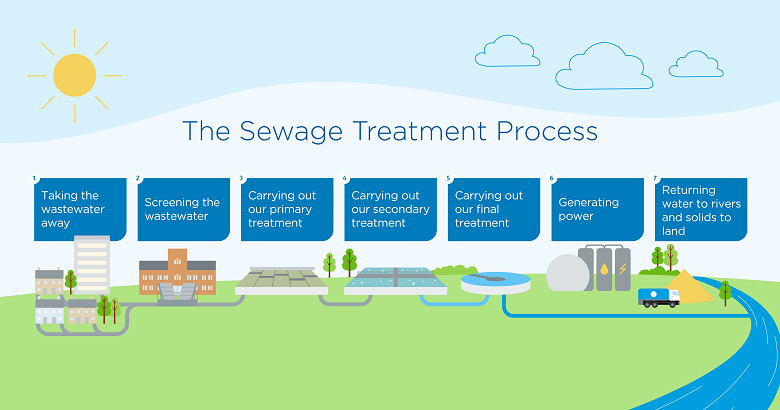Strategic Approaches to Boost Waste Water Treatment Performance and Minimize Environmental Effect
In the world of waste water therapy, the quest for improved performance and lowered ecological influence is a continuous challenge that demands strategic options. As culture comes to grips with the essential to manage water sources sustainably, a nuanced method ends up being crucial. The assimilation of sophisticated treatment technologies, energy-efficient procedures, resource recovery techniques, improved nutrient elimination methods, and smart monitoring and control systems represents a complex framework for resolving these pressing problems. What exists at the core of this complex internet of approaches is the potential to change the way we come close to waste water therapy, not simply as a procedure of disposal, however as a beneficial possibility for innovation and ecological stewardship.
Advanced Therapy Technologies
Innovative membrane layer filtration systems have actually transformed sophisticated wastewater therapy processes, significantly improving the elimination of contaminants. These cutting-edge systems work forcibly water via a semi-permeable membrane layer, effectively separating contaminations from the water stream. The membrane layer's microscopic pores trap toxins such as bacteria, viruses, and put on hold solids, permitting only purified water to go through. This modern technology has actually shown to be very efficient in eliminating a variety of contaminants, consisting of pharmaceuticals, heavy steels, and natural substances, which are frequently testing to remove via conventional therapy methods.
Furthermore, membrane purification systems use various advantages over conventional treatment techniques. In addition, these systems are extremely functional and can be easily incorporated into existing therapy plants or used as standalone devices for decentralized applications.
Energy-Efficient Processes
The assimilation of energy-efficient processes in wastewater treatment systems is crucial for optimizing resource application and reducing operational expenses. One key method to boosting energy effectiveness in wastewater treatment is the use of innovative oygenation systems, such as great bubble diffusers or surface aerators, which can improve oxygen transfer effectiveness and reduce energy usage.
In addition, optimizing procedure control and automation via the use of innovative sensing units and keeping an eye on systems can improve total energy effectiveness by changing procedures in real-time based on actual need and problems. Applying power audits and on a regular basis checking power efficiency signs are necessary methods to determine areas for improvement and track energy-saving initiatives effectively. Overall, the fostering of energy-efficient procedures in wastewater treatment not only profits the setting however likewise adds to long-term price financial savings and functional sustainability.
Resource Recovery Approaches
With a concentrate on maximizing resource utilization and sustainability in wastewater therapy systems, the execution of source healing techniques becomes a critical aspect in enhancing functional effectiveness. Resource recovery strategies in wastewater therapy include the identification and removal of beneficial sources from the waste stream, therefore transforming what was when taken into consideration waste into an important possession. By executing resource healing methods such as nutrient elimination and recovery, energy generation from organic matter, and the manufacturing of reusable water, wastewater therapy plants can lessen ecological impact while maximizing effectiveness.

Improved Nutrient Removal Techniques
Implementing innovative nutrient elimination methods is necessary for enhancing the effectiveness of wastewater treatment systems. Enhanced nutrient elimination plays a critical duty in reducing the environmental effect of treated effluent discharged into water bodies. Among the crucial methods used for boosted nutrient removal is the procedure of organic nutrient removal (BNR), find more which entails the removal of nitrogen and phosphorus via organic processes. This can be attained with the use of specialized bacteria that can convert nitrogen substances into inert nitrogen gas via denitrification, and build up phosphorus within their cells via a process called boosted biological phosphorus elimination (EBPR)

In addition to BNR, progressed therapy methods such as membrane bioreactors (MBRs) and created wetlands can likewise be utilized to boost nutrient removal effectiveness. MBRs make use of membranes to achieve high-grade effluent standards by successfully getting rid of nutrients and put on hold solids. Constructed wetlands simulate all-natural marsh procedures to remove nutrients through plant uptake, microbial activity, and sedimentation. By integrating these sophisticated nutrient elimination strategies right into wastewater treatment markets, communities and systems can successfully lower nutrient pollution and protect the environment.
Smart Surveillance and Control Solution
Utilizing cutting-edge technology, the assimilation of wise monitoring and control systems revolutionizes the functional effectiveness of wastewater treatment centers. These systems integrate advanced sensing units and information analytics to continuously check vital specifications such as pH levels, turbidity, liquified oxygen, and circulation rates in real-time. By accumulating and assessing this information, operators can obtain beneficial understandings into the efficiency of the treatment procedures, making it possible for positive adjustments to optimize therapy effectiveness.
Smart monitoring and control systems additionally support remote surveillance abilities, allowing drivers to gain access to real-time information and control functions from off-site places. This remote access improves functional flexibility and responsiveness, making it possible for swift interventions in instance of system malfunctions or changes in influent top quality. Additionally, the anticipating upkeep abilities of these systems aid avoid tools failures and reduce downtime, inevitably improving the general integrity of wastewater therapy operations (Waste Water Treatment).
Verdict
Finally, calculated strategies such as advanced treatment innovations, energy-efficient procedures, source recuperation strategies, enhanced nutrient removal techniques, and wise tracking and control check this site out systems play a crucial role in improving wastewater treatment effectiveness and lessening ecological effect. By implementing these techniques, wastewater treatment plants can improve their overall performance, minimize power usage, recoup important sources, and ensure conformity with ecological regulations. These methods are necessary for effective and lasting wastewater monitoring techniques.

In final thought, critical methods such as innovative treatment modern technologies, energy-efficient procedures, resource recovery approaches, enhanced nutrient elimination strategies, and wise surveillance and control systems play a vital role in improving wastewater therapy performance and reducing ecological impact.